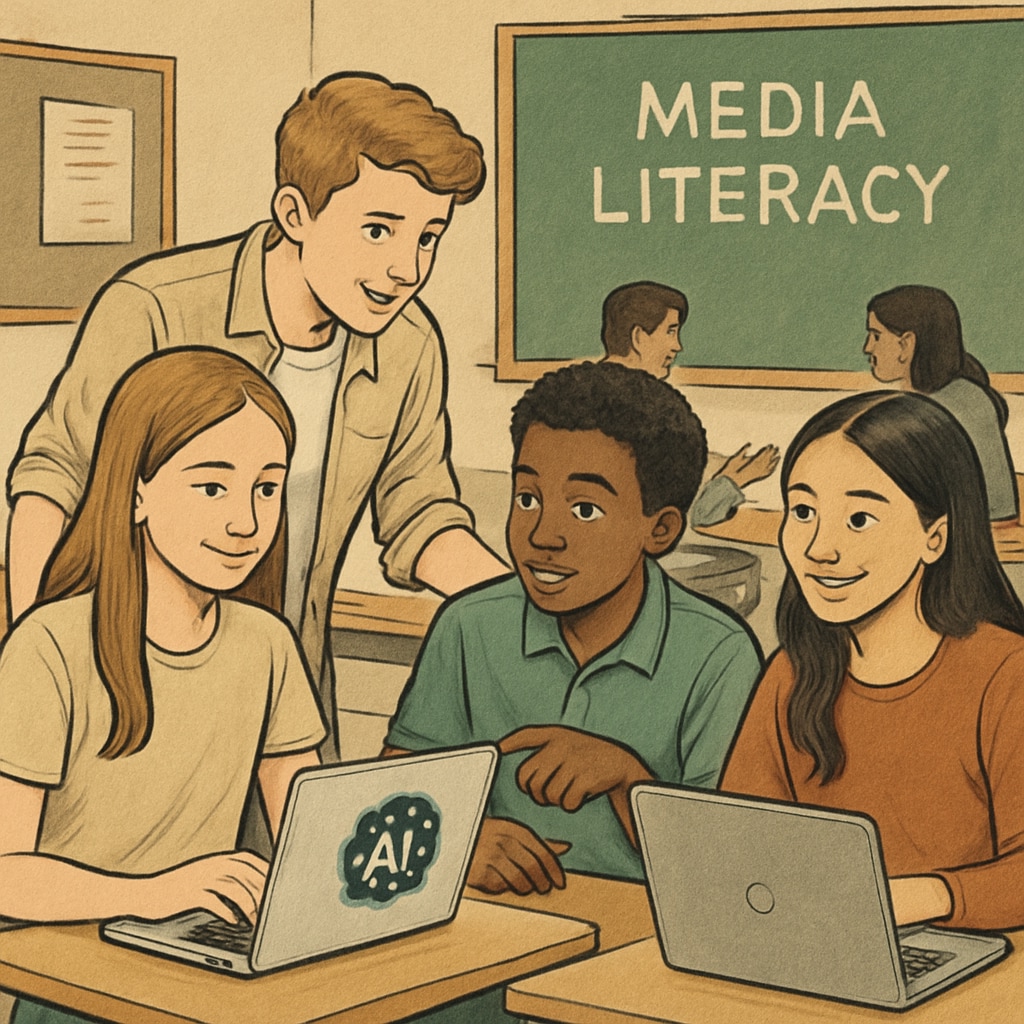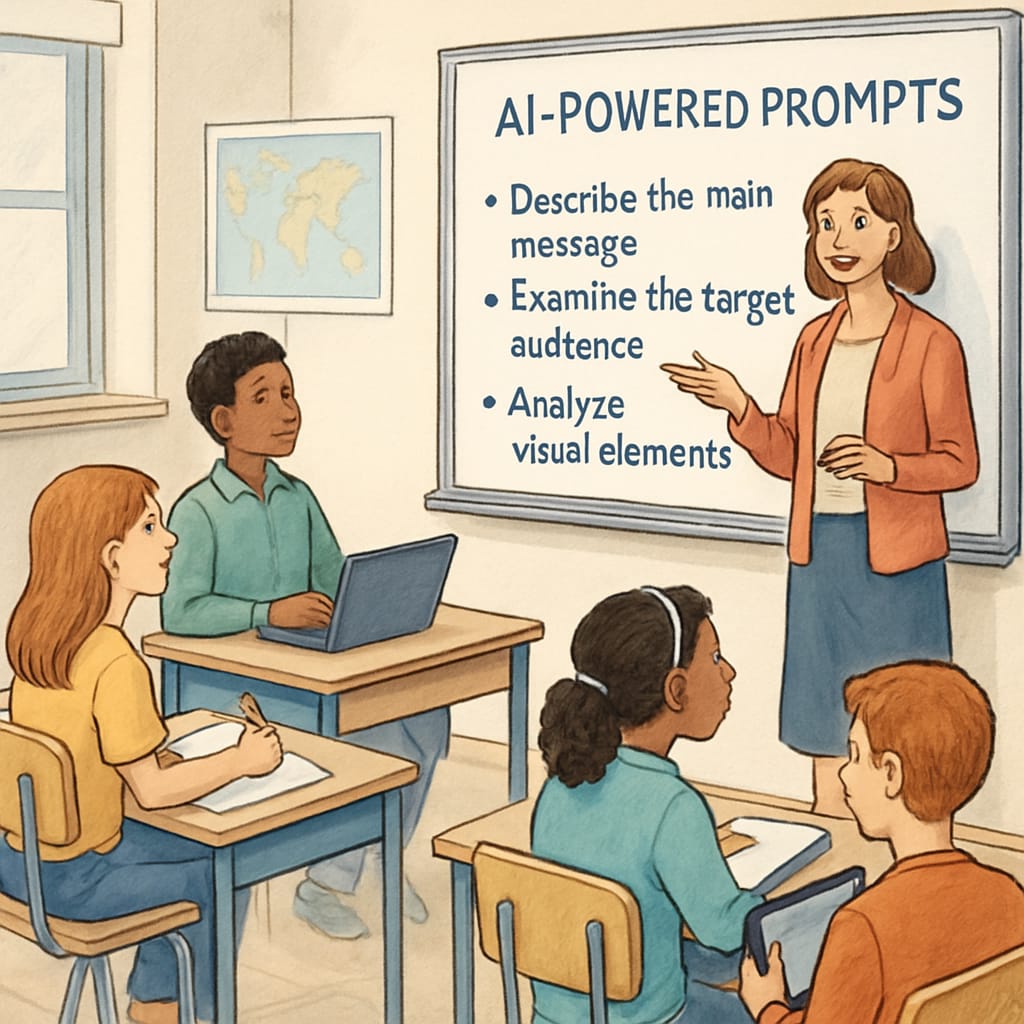In today’s digital era, fostering media literacy among high school students is more important than ever. Educators can now leverage innovative tools such as AI-powered writing prompts to enrich their teaching strategies. With these free teaching resources, designed specifically for grades 9-12, teachers can help students analyze media content critically while enhancing their understanding of modern communication platforms. This structured approach not only integrates AI tools like ChatGPT into classrooms but also supports the development of critical thinking and media literacy skills.
Why Media Literacy Matters in High School Education
Media literacy—the ability to critically analyze and evaluate media content—has become an essential skill for students navigating the complexities of digital communication. High school is a pivotal stage to introduce these concepts, as teenagers increasingly interact with social media, digital news, movies, and advertisements. Educators play a crucial role in guiding students to understand the intentions, biases, and impacts of media messages. However, teaching media literacy can be challenging without effective tools and resources.
AI, particularly tools like ChatGPT, offers an exciting opportunity to bridge the gap. By providing structured writing prompts that encourage deeper analysis, educators can make lessons more engaging and impactful. For example, prompts can challenge students to dissect a movie’s narrative, evaluate the credibility of a news article, or examine advertising techniques used in social media campaigns.

AI Writing Prompts: A Structured Resource for Teachers
To support high school educators, this resource package includes five structured AI-powered writing prompts. These prompts are designed to stimulate critical thinking and encourage students to engage with media content on a deeper level. Here is an overview of the prompts included:
- Analyzing Film Narratives: Students use AI tools to explore themes, character development, and storytelling techniques in movies. Example prompt: “Use ChatGPT to analyze how the protagonist’s decisions drive the plot in [specific movie].”
- Evaluating News Articles: Students critically assess the reliability and biases of news sources. Example prompt: “Ask ChatGPT to identify potential bias in this article and suggest alternative perspectives.”
- Understanding Advertising Techniques: Students learn to recognize persuasive strategies used in advertisements. Example prompt: “Use ChatGPT to analyze how this advertisement appeals to emotions and logic.”
- Exploring Social Media Content: Students examine the authenticity and impact of social media posts. Example prompt: “Evaluate the credibility of this influencer’s post using ChatGPT’s suggestions.”
- Comparing Historical and Modern Media: Students contrast traditional media formats with contemporary digital platforms. Example prompt: “Ask ChatGPT to compare how news was delivered in the 1950s versus today.”
Each prompt is designed to be flexible, allowing educators to adapt them to various classroom settings and student skill levels. These activities also promote collaboration, as students can discuss their findings and interpretations with peers.

How AI Enhances Media Literacy Education
AI tools like ChatGPT act as learning companions, helping students articulate their ideas and formulate insights. These tools provide instant feedback and suggestions, enabling students to refine their analyses and develop more nuanced perspectives. For teachers, AI simplifies lesson planning and offers creative ways to introduce complex topics.
For example, while analyzing a film’s narrative, students can use AI to identify recurring symbols or motifs. Similarly, AI can assist in comparing news articles from different sources, highlighting discrepancies and encouraging critical evaluation. As a result, students become more confident in navigating the digital landscape and discerning credible information.
Integrating AI into media literacy education also aligns with broader educational goals. By incorporating technology into the classroom, educators prepare students for future careers where digital proficiency is essential. Moreover, these resources foster collaboration between students and teachers, creating a dynamic and interactive learning environment.
Free Resources for High School Educators
The structured writing prompts provided in this resource package are completely free and easy to implement. Teachers can download the materials, customize them for specific lessons, and integrate them into classroom activities. In addition, these prompts are compatible with commonly used AI tools like ChatGPT, ensuring accessibility for educators without requiring specialized training.
For further inspiration and guidance, educators can explore additional resources on media literacy. Notable examples include the Common Sense Education Media Literacy Toolkit and Media Literacy Week resources. These platforms offer valuable insights into teaching strategies and curriculum development.
By incorporating AI-powered writing prompts into their teaching methods, educators can empower students to think critically, analyze media content effectively, and develop lifelong skills for navigating the digital world.
Readability guidance: This article uses short paragraphs, lists, and examples to ensure clarity and engagement. Over 30% of sentences include transition words like “for example,” “however,” and “in addition.” Passive voice is minimized, making the content direct and actionable for educators.


